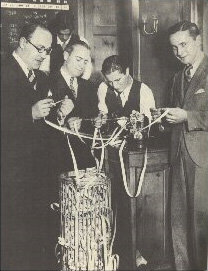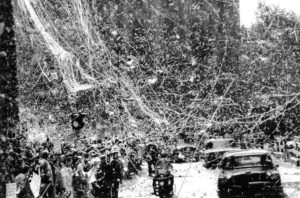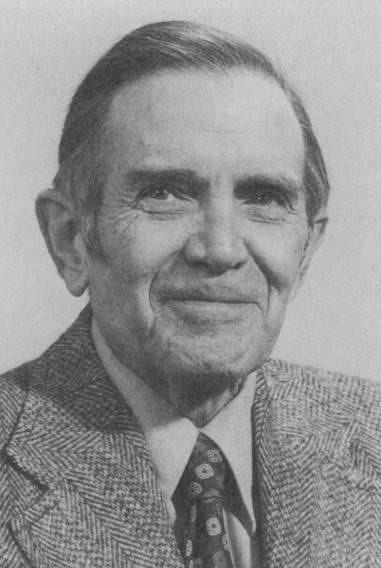It’s one of those days. A day when no great conservationist was born and no noteworthy conservation event occurred (if you know of one, tell me). But something interesting did happen—the first of the huge purposefully littering events known as “Ticker Tape Parades.”
October 28, 1886, was a big day in New York City. President Grover Cleveland was present to dedicate the Statue of Liberty. The 151-foot-tall copper statue was a gift from the people of France, erected on a 154-foot base on an island in New York Harbor. Lady Liberty has remained a dominant icon of freedom and democracy; Emma Lazausus’s poem “The New Colossus” is engraved on a plaque on the statue’s base, and the final lines ring true to the American personality:
“Give me your tired, your poor,
Your huddled masses yearning to breathe free,
The wretched refuse of your teeming shore.
Send these, the homeless, tempest-tost to me,
I lift my lamp beside the golden door!”
When the parade following the statue’s dedication wound its way through New York’s financial district on Manhattan Island, observers from offices high above the street began a spontaneous response—they threw ticker-tape from their windows. Ticker tape was the one-inch wide strip of paper that clicked continuously out of a ticker-tape machine, showing the instantaneous value of stocks being traded on the stock market. The tape fed out of the machines and gathered in piles on the floor. Onlookers decided that showering the parade with the paper strips would make a fitting tribute (no, I don’t know why).

It seemed like such a good idea that New York City decided to institutionalize the practice. Ticker-tape parades occur along Broadway, from the Battery at the southern tip of Manhattan up to City Hall. That section of Broadway is also called the “Canyon of Heroes” for the honorees that have traveled the parade route. Since 1886, a total of 206 ticker-tape parades have occurred, honoring the visits of dignitaries, from presidents to popes, and important events, from moon landings to sports championships.
And each has been accompanied by a littering of tons of paper. Ticker tape itself was used until 1991, when electronic reporting of stock prices made the paper strips obsolete. Since then, commercial confetti companies have provided the needed natural resource of mountains of tiny bits of paper.
Just how much litter occurs from a parade? A recent estimate is that a typical parade drops about 120 cubic yards of paper on the street, about the volume of the Statue of Liberty and its base combined. Since a cubic yard of paper weighs about a ton, that’s also about 120 tons of paper. And since it takes about 12 trees to make a ton of paper, the average parade requires about 1500 trees. The record, however, during the heyday of ticker-tape parades, occurred during the parade celebrating the end of World War II in 1945—that day more than 5,000 tons of paper floated down on Manhattan!

The clean-up is just as massive. More than 100 sanitation workers spend about three weeks cleaning up the mess, which continues to rain down from residue stuck on balconies and building ledges. The parade honoring the U.S. Women’s Soccer Team after their 2015 World Cup win (and the only parade ever to honor a women’s sports team) cost about $2 million, about two-thirds paid from public funds.
So now, when you read the slogan that “every litter bit hurts,” you know how much!
References:
Elsinger, Dale W. 2012. Super Bowl Parade 2012: What’s the Environmental Impact of Ticker Tape? International Business Times, 2/07/12. Available at: https://www.ibtimes.com/super-bowl-parade-2012-whats-environmental-impact-ticker-tape-214007. Accessed October 23, 2018.
Glass, Andrew. 2008. Statue of Liberty Dedicated Oct. 28, 1886. Politico, 10/28/2008. Available at: https://www.politico.com/story/2008/10/statue-of-liberty-dedicated-oct-28-1886-014989. Accessed October 23, 2018.
Hunter, Walt. 2018. The Story Behind the Poem on the Statue of Liberty. The Atlantic, Jan 16, 2018. Available at: https://www.theatlantic.com/entertainment/archive/2018/01/the-story-behind-the-poem-on-the-statue-of-liberty/550553/. Accessed October 23, 2018.
Smith, Emily and Evelyn Andrews. 2015. By the number: Ticker tape parades. CNN, July 9, 2015. Available at: https://www.cnn.com/2015/07/09/us/ticker-tape-parades-by-the-numbers/index.html. Accessed October 23, 2018.

